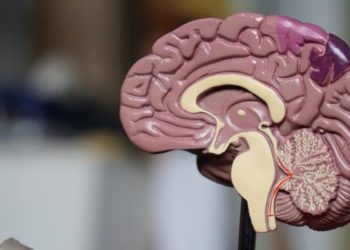Aspirin use linked to development of Age-Related Macular Degeneration (AMD)
Jan 22nd – 24.5% of regular aspirin users in this prospective study went on develop AMD.
[tabs tab1=”2MM Rundown” tab2= “2MM Full Report”]
[tab]
Image: PD
1. 24.5% of regular aspirin users in this prospective study went on develop AMD.
2. The data also revealed a dose-response effect of aspirin on the development of AMD.
This study is the largest prospective study to date examining the relationship between aspirin and Age-Related Macular Degeneration (AMD), and found an ~2.5 fold increase in incident risk of AMD in regular aspirin users after risk factor adjustment. The key internal strengths of the study include the large study size, use of validated methods to ascertain baseline characteristics and adjustment for potential confounders between groups. In addition, the dose-response relationship lends credibility to the possible causal link that may exist. However, there is no escaping the observational, non-randomized nature of this study, and thus causality cannot be concluded. Moreover, some may cite the odds ratio (2.5) as quite modest for a causal link. The nature of this study did not permit controlling for other, unmeasured confounders that may have played a role in AMD development. While an important association for providers to be aware of in the clinic, this study is likely insufficient in and of itself to guide clinical practice.
Click to read the study in JAMA
[/tab]
[tab]
Image: PD
1. 24.5% of regular aspirin users in this prospective study went on develop AMD.
2. The data also revealed a dose-response effect of aspirin on the development of AMD.
This [prospective analysis] study involved ~2400 individuals, 257 of which were found to be regular aspirin users (>1 aspirin/week). Baseline aspirin use was collected prior to the initiation of the study via structured interview and validated questionnaire, as were additional risk factors for AMD. Retinal photographs at periodic visits were used to objectively assess the development of AMD. At 15 year follow-up, 24.5% of those taking aspirin regularly developed AMD. The cumulative incidence of non-aspirin users at year 15 was 3.7% at 15 years versus 9.3% in the aspirin group, a significant difference. Associations remained significant after adjustment for body mass index, cardiovascular disease and blood pressure (odds ratio 2.46). A significant dose-sensitive increase in AMD incidence was observed when comparing regular users to occasional users at the 15 year end period.
Further reading:
1. Associations between Aspirin Use and Aging Macula Disorder
2. Low-Dose Aspirin and Medical Record–Confirmed Age-related Macular Degeneration in a Randomized Trial of Women
In sum: This study is the largest prospective study to date examining the relationship between aspirin and AMD, and found an ~2.5 fold increase in incident risk of AMD in regular aspirin users after risk factor adjustment. The key internal strengths of the study include the large study size, use of validated methods to ascertain baseline characteristics and adjustment for potential confounders between groups. In addition, the dose-response relationship lends credibility to the possible causal link that may exist. However, there is no escaping the observational, non-randomized nature of this study, and thus causality cannot be concluded. Moreover, some may cite the odds ratio (2.5) as quite modest for a causal link. The nature of this study did not permit controlling for other, unmeasured confounders that may have played a role in AMD development. While an important association for providers to be aware of in the clinic, this study is likely insufficient in and of itself to guide clinical practice.
Click to read the study in JAMA
By [MS]
© 2013 2minutemedicine.com. All rights reserved. No works may be reproduced without written consent from 2minutemedicine.com. Disclaimer: We present factual information directly from peer reviewed medical journals. No post should be construed as medical advice and is not intended as such by the authors or by 2minutemedicine.com. PLEASE SEE A HEALTHCARE PROVIDER IN YOUR AREA IF YOU SEEK MEDICAL ADVICE OF ANY SORT. Content is produced in accordance with fair use copyrights solely and strictly for the purpose of teaching, news and criticism. No benefit, monetary or otherwise, is realized by any participants or the owner of this domain.
[/tab]
[/tabs]




